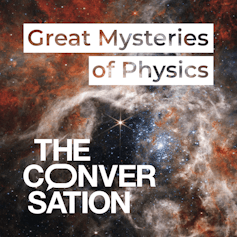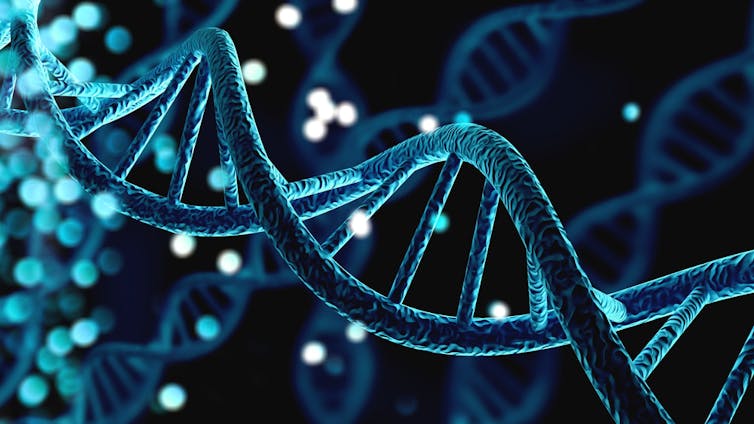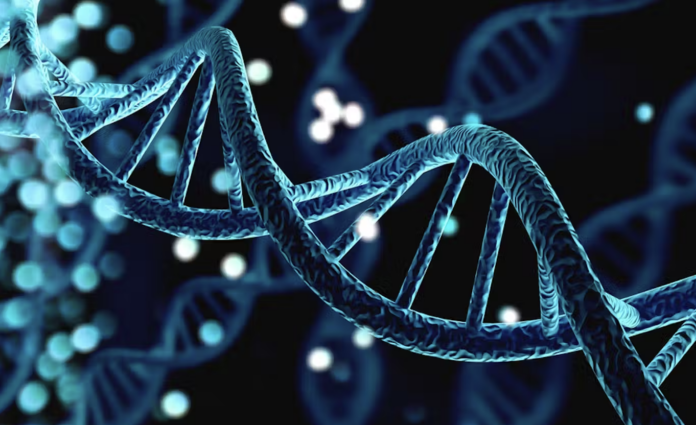Life: modern physics can’t explain it – but our new theory, which says time is fundamental, might

By Sara Imari Walker, Arizona State University
Over the short span of just 300 years, since the invention of modern physics, we have gained a deeper understanding of how our universe works on both small and large scales. Yet, physics is still very young and when it comes to using it to explain life, physicists struggle.
Even today, we can’t really explain what the difference is between a living lump of matter and a dead one. But my colleagues and I are creating a new physics of life that might soon provide answers.
More than 150 years ago, Darwin poignantly noted the dichotomy between what we understand in physics and what we observe in life – noting at the end of The Origin of Species “…whilst this planet has gone cycling on according to the fixed law of gravity, from so simple a beginning endless forms most beautiful and most wonderful have been and are being evolved”.
The importance of time
Isaac Newton described a universe where the laws never change, and time is an immutable and absolute backdrop against which everything moves. Darwin, however, observed a universe where endless forms are generated, each changing features of what came before, suggesting that time should not only have a direction, but that it in some ways folds back on itself. New evolutionary forms can only arise via selection on the past.
Presumably these two areas of science are describing the same universe, but how can two such diametrically opposite views be unified? The key to understanding why life is not explainable in current physics may be to reconsider our notions of time as the key difference between the universe as described by Newton and that of Darwin. Time has, in fact, been reinvented many times through the history of physics.
Although Newton’s time was fixed and absolute, Einstein’s time became a dimension – just like space. And just as all points in space exist all at once, so do all points in time. This philosophy of time is sometimes referred to as the “block universe” where the past, present and future are equally real and exist in a static structure – with no special “now”. In quantum mechanics, the passage of time emerges from how quantum states change from one to the next.

This is article is accompanied by a podcast series called Great Mysteries of Physics which uncovers the greatest mysteries facing physicists today – and discusses the radical proposals for solving them.
The invention of thermodynamics gave time its arrow, explaining why it’s moving forward rather than backwards. That’s because there are clear examples of systems in our universe, such as a working engine, that are irreversible – only working in one direction. Each new area of fundamental physics, whether describing space and time (Newton/Einstein), matter and light (quantum mechanics), or heat and work (thermodynamics) has introduced a new concept of time.
But what about evolution and life? To build novel things, evolution requires time. Endless novelty can only come to be in a universe where time exists and has a clear direction. Evolution is the only physical process in our universe that can generate the succession of novel objects we associate to life – things like microbes, mammals, trees and even cellphones.
Information and memory
Such objects cannot fluctuate into existence spontaneously. They require a memory, based on what existed in the past, to construct things in the present. It is such “selection” that determines the dividing line between the universe described by current physics, and what Darwin saw: it is the mechanism that turns a universe where memory does not matter in determining what exists, to one where it does.

Think about it, everything in the living world requires some kind of memory and information flow. The DNA in our cells is our blueprint. And to invent new things, such as rockets or medication, living beings also need information – knowledge of the laws of physics and chemistry.
To explain life, we therefore need to understand how the complex objects life creates exist in time. With my collaborators, we have been doing just that in a newly proposed theory of physics called assembly theory.
A key conjecture of assembly theory is that, as objects become more complex, the number of unique parts that make it up increases, and so does the need for local memory to store how to assemble the object from its unique parts. We quantify this in assembly theory as the shortest number of physical steps to build an object from its elementary building blocks, called the assembly index.
Importantly, assembly theory treats this shortest path as an intrinsic property of the object, and indeed we have shown how assembly index can be measured for molecules using several different measuring techniques including mass spectrometry (an analytical method to measure the mass-to-charge ratio of molecules).
With this approach, we have shown in the lab, with measurements on both biological and non-biological samples, how molecules with an assembly index above 15 steps are only found in living samples.
This suggests that assembly theory is indeed capable of testing our hypothesis that life is the only physics that generates complex objects. And we can do so by identifying those objects that are so complex the only physical mechanism to form them is evolution.
We are aiming to use our theory to estimate when the origin if life happens by measuring the point at which molecules in a chemical soup become so complex that they start using information to make copies of themselves – the threshold at which life arises from non-life. We may then apply the theory to experiments aiming to generate a new origin of life event in the lab.
And when we know this, we can use the theory to look for life on worlds that are radically different to Earth, and may therefore look so alien that we wouldn’t recognise life there.
If the theory holds, it will force a radical rethink on time in physics. According to our theory, assembly can be measured as an intrinsic property for molecules, which corresponds to their size in time – meaning time is a physical attribute.
Ultimately, time is intrinsic to our experiences of the world, and it is necessary for evolution to happen. If we want physics to be capable of explaining life – and us – it may be that we need to treat time as a material property for the first time in physics.
This is perhaps the most radical departure for physics of life from standard physics, but it may be the critical insight needed to explain what life is.![]()
Sara Imari Walker, Professor of Physics, School of Earth and Space Exploration, Arizona State University
This article is republished from The Conversation under a Creative Commons license. Read the original article.



